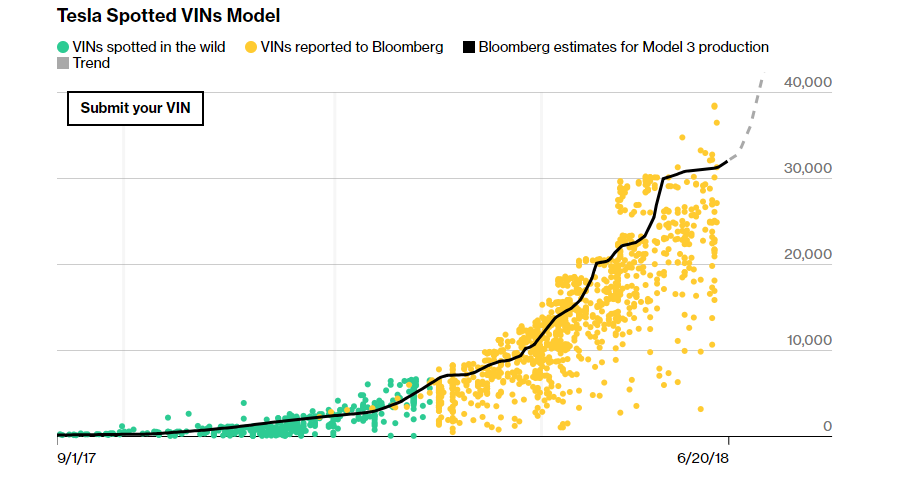$特斯拉(TSLA)$
Bloomberg更新model 3产量预测 骤减至1600台/周 原因大致是因为特斯拉自5月23起再没有向美国车管所部门注册VINS number .先上图后文有解释为何预测产量骤降. 原地址https://www.bloomberg.com/graphics/2018-tesla-tracker/ 翻墙可看
下面是这次数据更新的note更新于6.18
Today we made some significant changes to our model. The two alterations affect Method 1, the way we track batches of VINs registered with U.S. safety regulators. As a result, our cumulative Model 3 production estimates fell by about 8 percent.
Change 1: Buffer Methodology
Our two datasets had been departing significantly in recent weeks, with the model of registered VINs reaching unrealistic heights. We think that, as production scaled up, our model wasn't accounting for a sufficient buffer of VINs that Tesla keeps on hand at any given time. The biggest change to our model is to increase the buffer over time, which is what resulted in the drop to our cumulative Model 3 estimates. The change applies retroactively to all historic data.
Change 2: Batch Delays
People who have been watching our model closely week by week will notice what seems like an even more dramatic change: a 40 percent drop in this week's estimated weekly rate compared with what we were previously reporting. That's actually due to a much smaller change to our methodology than it first appears.
Tesla hasn't registered a new batch of VINs in an unusually long time. Using our previous methodology, the model would have eventually accounted for this delay with a retroactive downward correction. With our new model, such delays in registrations will be reflected in real time rather than retroactively. This change has negligible impact to our long-term estimates and is meant to make our estimates a bit more stable.
(Reminder: Given the shortcomings of the VIN data, our weekly rates are rough approximations. Our primary focus is on the accuracy of cumulative production.)
The Takeaway
The precise change to our buffer methodology is somewhat arbitrary, and we hesitate to make such a change to our model without new data to validate it. There are reasons we could be wrong. For example: Tesla could theoretically be stockpiling cars at the end of the quarter in order to prolong its eligibility for U.S. federal electric-vehicle subsidies for another three months. In that case, Method 1 would be accurately showing high production numbers, while the dataset of customer VINs reported to Bloomberg would be lagging.
However, we feel it's more likely that our methodology for Method 1 simply needed an upgrade now that Tesla is achieving consistently higher levels of production. We'll have a better idea in two weeks, when Tesla reports its second-quarter production tallies.





精彩评论